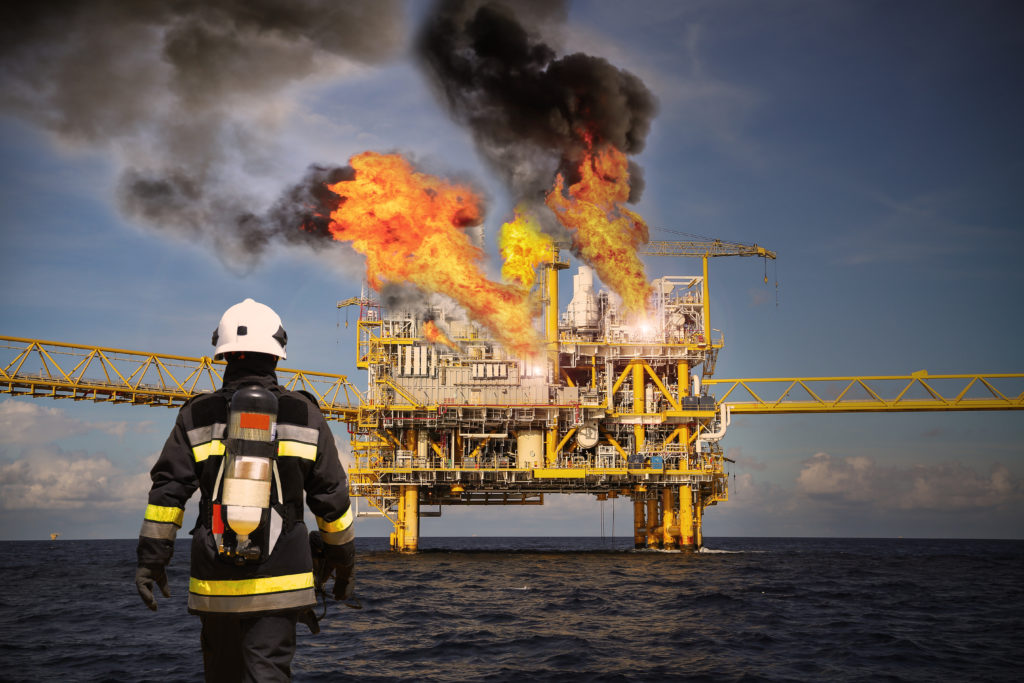Fire and Gas Detection Systems Guideline in Lowering Explosion Risks


Industrial fires and explosions cost companies and governments billions of dollars yearly. In 2017, an average of 37,000 fires occurred at industrial and manufacturing properties and resulted in 18 deaths and 279 injuries. A total amount of $1 billion was recorded in direct property damage alone.
Well designed fire safety systems, detection and alarm systems are all paramount to keep workers safe. This is especially true for worksites that where flammable and/or toxic substances are extracted and processed. This includes chemical plants, oil and gas refineries, and on offshore drilling rigs. Prompt detection provides timely notification of personnel, activation of automatic fire suppression and control systems during the early stages of an incident, thereby minimizing the impact of the fire.
The four types of fire and gas detectors include:
- Smoke Sensing – These detectors respond to the presence of smoke particles. These detectors are primarily used indoors and in enclosed spaces.
- Heat Sensing – These detectors respond when the sensing device becomes heated to a predetermined level.
- Radiant Energy Sensing – These detectors respond to the radiant energy produced by burning substances. Fire detectors sense the radiant energy from open flames with background sunlight or ambient light. Spark/ember detectors sense sparks or embers in dark environments such as ductwork.
- Combustible Gas Sensing – These detectors respond to presence of combustible gases or vapour.
Importance of Fire Detection Systems
Fire detection system shall be installed as the first line of defence except for situation where the risk is solely from flammable gas leakage.
Fire detection system operates faster than the gas detection system. However, both fire and gas detection system shall be considered if other flammable materials are present.
Automatic fire detection system linking up with the extinguishing system may be considered for particularly hazardous or remotely situated or unmanned facilities.
The recognised code of practice for detection and alarm system include Code of Practice 10, NFPA 72E etc.
Types of Detectors
- Flame Detectors
- Heat Detectors
- Point Detectors
- Line Detector
- Fusible Detectors
- Smoke Detectors
- Fixed Combustible Gas Detectors
Flame Detectors
- Flame Detectors Ultraviolet (UV) and infrared (IR) flame detector react to radiation emitted from the flame. They are located to ―see the flame directly and the detectors must be shielded from external sources to minimize false alarms. Their field of vision usually covers a larger area than heat detectors, but they do not detect a smoldering fire as quickly as some smoke detectors
- Radiant energy (flame) detectors shall be used when there are multiple fire sources in an area. The flame detector covers a wide area and may be more economical than multiple point sources. Flame detectors also respond faster than heat sensing or smoke detectors. When rapid spread of a fire is expected, and automated response is required, the flame detector will provide faster response than the heat sensing device
Heat Detectors
Heat detecting devices fall into two categories—those that respond when the detection element reaches a predetermined temperature (fixed-temperature types) and those that respond to an increase in temperature at a rate greater than some predetermined value (rate-of-rise types). Preferred types combine both the fixed-temperature and rate-of-rise principles.
Heat sensing detectors shall be employed when the potential source of the fire is well known.
Temperature sensitive devices shall be placed near each fire source. These heat sensing devices are usually not subject to false alarms. This makes them ideal for initiating automated responses to fires such as water deluge sprays.
For the full guideline: SCDF – Fire Safety Guidelines for Open Plant Structures in Oil, Chemical and Process Industries
Gas Explosion Hazards, Fire Detection and Protection Systems Design for Oil & Gas is a 3-day training course held from 19 – 21 November 2018 (Singapore) designed to provide an insight into the major drivers into fire and explosion hazard risk, and the various methods of preventing and mitigating such risk. The course will discuss quantitative consequence analysis, such as vapor dispersion modeling, vapor cloud explosion modeling, fire modeling, and presents the details necessary to perform such analyses. In addition, it will focus on the fire and gas detection systems for offshore and onshore process areas, and how such systems can be used to lower the overall explosion risk to facilities. The course will demonstrate how performance-based designs can be used to evaluate the effectiveness of a fire and gas detection system. For more information, please contact us at info@opuskinetic.com.
Interested to read other articles? Check out: Industry Practice for Fire and Gas Detection Systems
Opus Kinetic believes that people are why organisations are successful, and giving people the knowledge to perform well at their job is integral for success. We pride ourselves as the premier provider of knowledge, offering acclaimed in-house trainings, and many others professional training courses spanning from various industries. Our training courses are well researched and updated with the latest industry trends. For more information on our professional training programs, visit us at http://www.opuskinetic.com/training.
